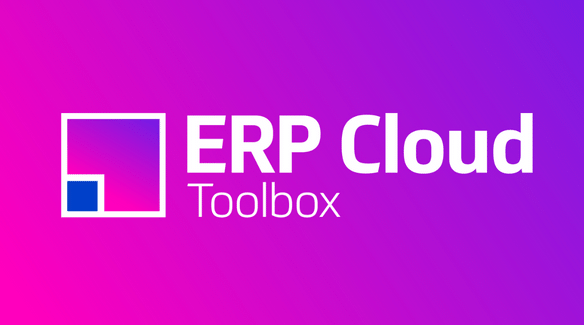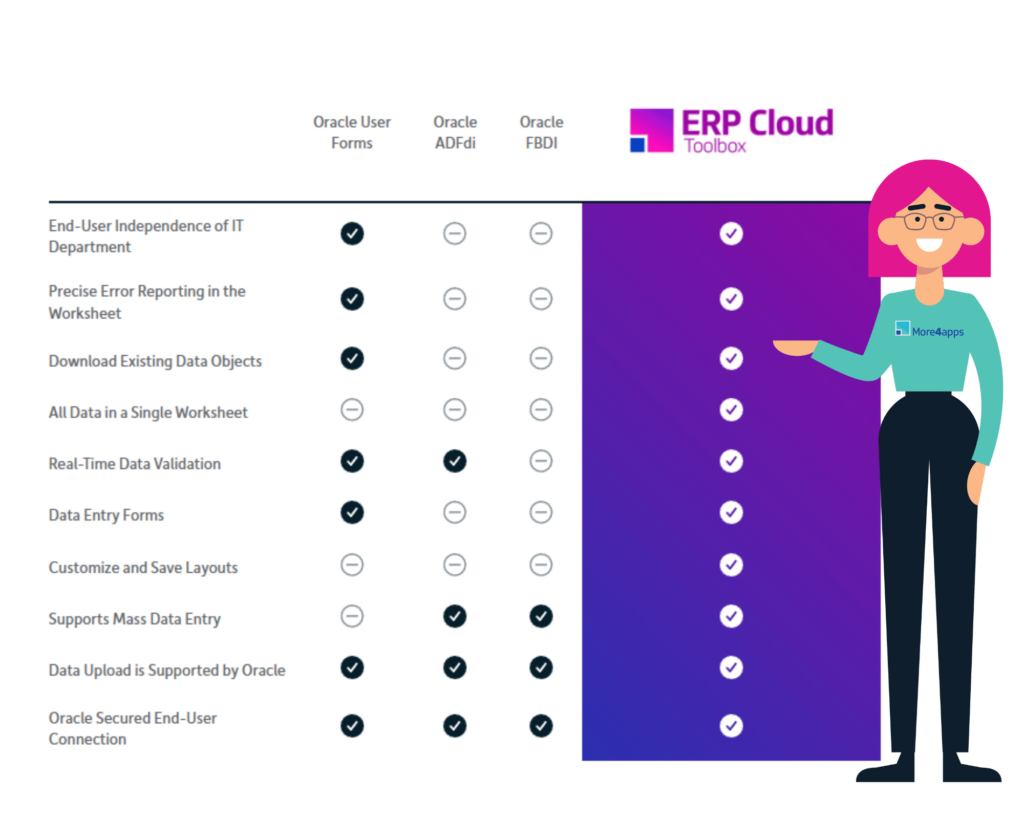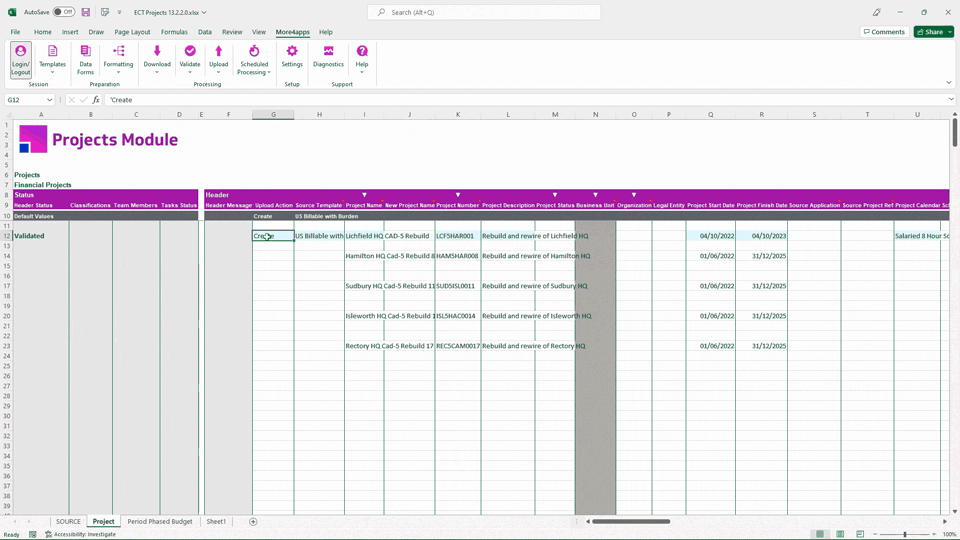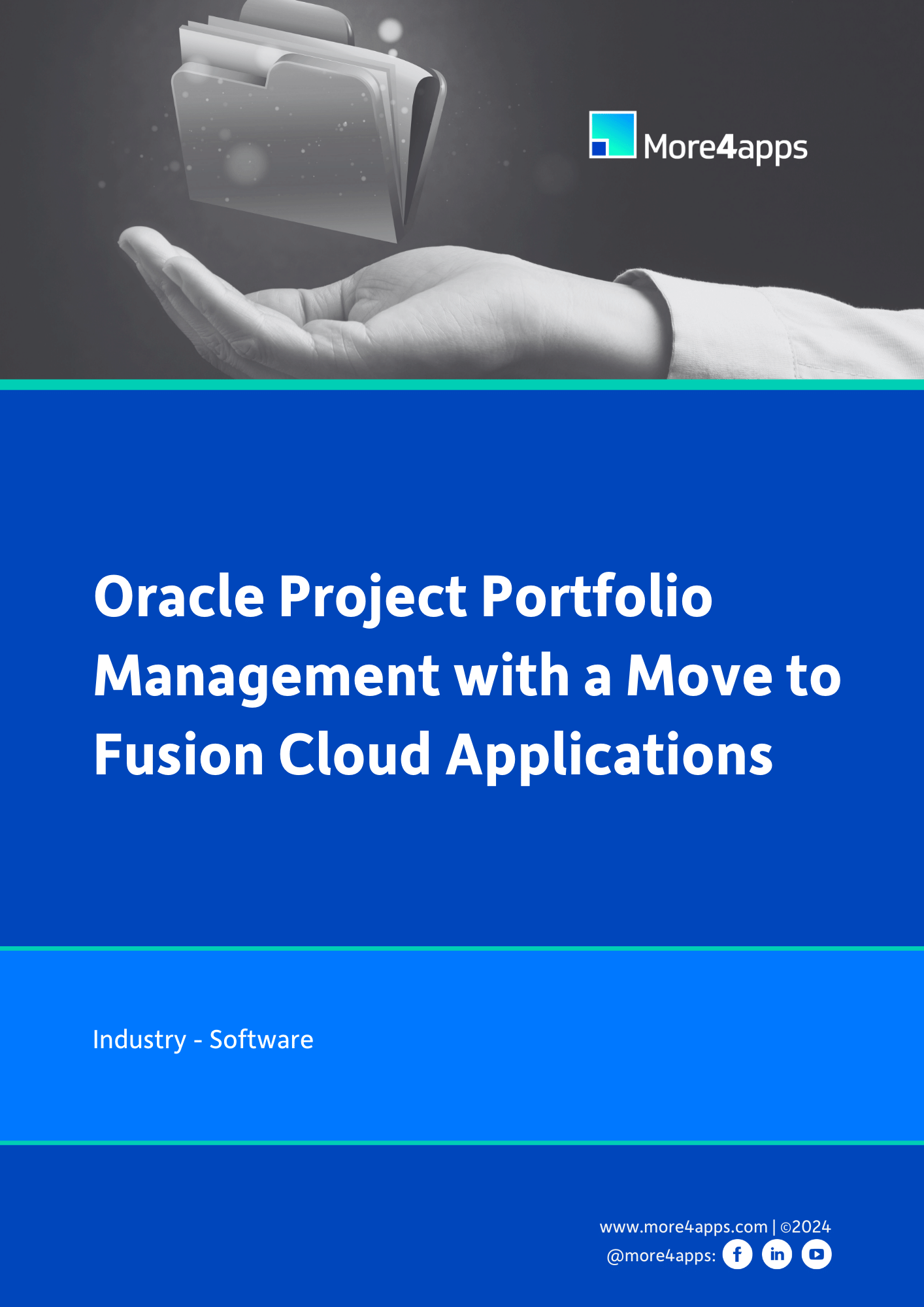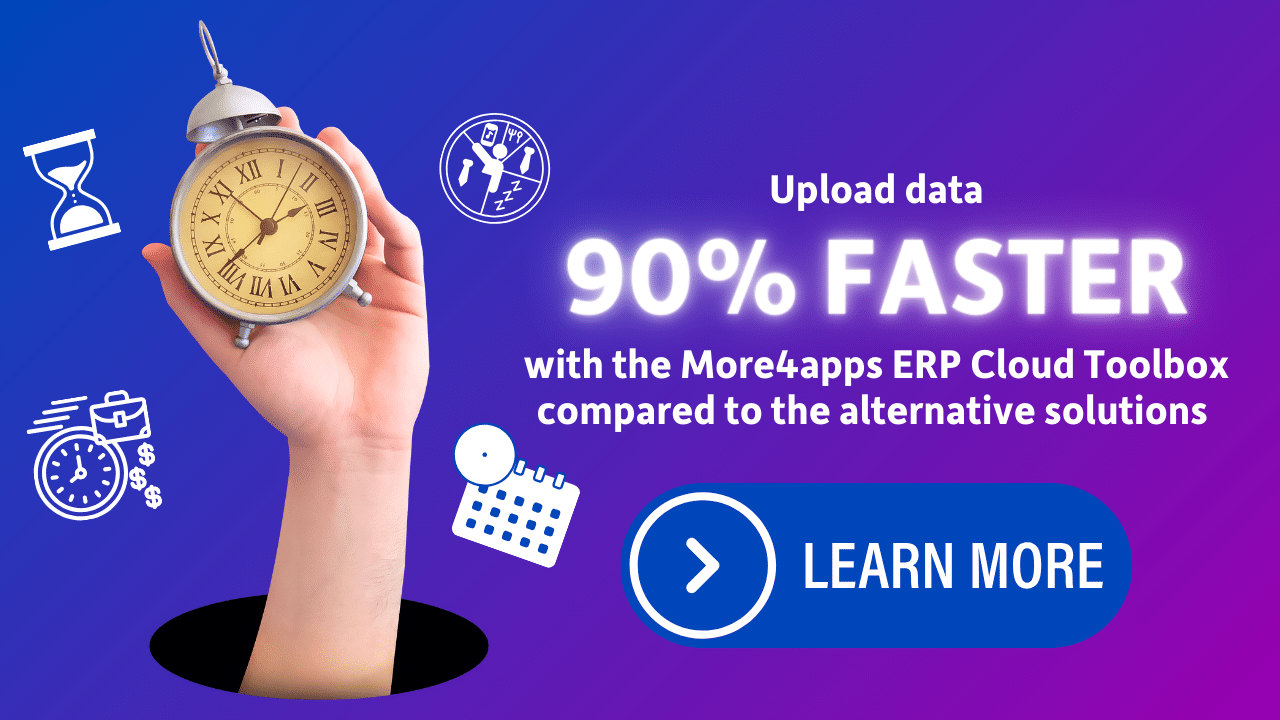Oracle Project Portfolio Management with a Move to Fusion Cloud Applications
April 24, 2024
Case Study – Software
After 20+ years of using Oracle on-prem, a leading global software, consulting and technology company migrated to Oracle Fusion Cloud Applications.
Oracle Fusion Cloud Applications
Learn more about the More4apps ERP Cloud Toolbox
About the Client
The company provides professional services and technology solutions in 140+ countries and has over 30,000 employees. With such wide-reaching operations, the company’s ERP system has been vital to powering its business across industries and countries.
Undergoing an implementation to Cloud provided the company a chance to improve many of their processes and workflows, especially those related to project and portfolio management.
Project and Portfolio Management: Before the Move
The company utilized the on-prem version of Oracle E-Business Suite R12 when they decided to move to Oracle Cloud. Over the years, their on-prem Oracle systems were upgraded, but they made few modifications to their processes despite organizational changes.
Moving to Cloud allowed them to implement functionality and solutions that were more suitable for their business needs. Among these changes was the addition of the Oracle Project Management solution within the Oracle Fusion Cloud ERP.
Moreover, the business previously operated without Oracle Projects, so much of their project accounting was done using Oracle’s General Ledger, alongside several offline spreadsheets and project management and financial systems. Having disjointed systems complicated reporting and decreased efficiency. It allowed for the possibility of having multiple conflicting spreadsheets to exist, errors to occur, and outdated or inaccurate data.
Project managers and accountants were relied upon for updated spreadsheets and for sharing the relevant information whenever needed. Therefore, teams were heavily relying on the availability of these individuals. A trustworthy, shared source of truth that was easy to access and maintain was needed. Using Oracle Project Management on Cloud was the clear answer.
Finding a Solution for Creating and Maintaining PPM Data in the Cloud
One key aspect of implementing Oracle Project Management for the organization was deciding how to create and update projects, related metadata, and related transactions, like time, miscellaneous costs, and usage costs.
Most teams would need to create 20 to 40 projects a month. More importantly, thousands of projects existed and needed to be updated and maintained, as would the incoming projects. To help them determine a path forward, the company turned to their Oracle PPM Implementation Specialist, Rob.
Project Creation
For project creation, Rob’s initial plan was to utilize More4apps, an Excel-based data loading software. He used the software previously when consulting on other Oracle implementation projects, but getting approval for outside software from the company’s legal and security teams required time and the company was eager to move forward.
Since the company only needed to create projects in small numbers, Rob decided to utilize one of Oracle’s new built-in tools, File Based Data Import (FBDI) templates. However, working with the standard templates require users to have extensive knowledge of the included columns and how they work. To help, Rob customized the templates to be more user-friendly for importing information.
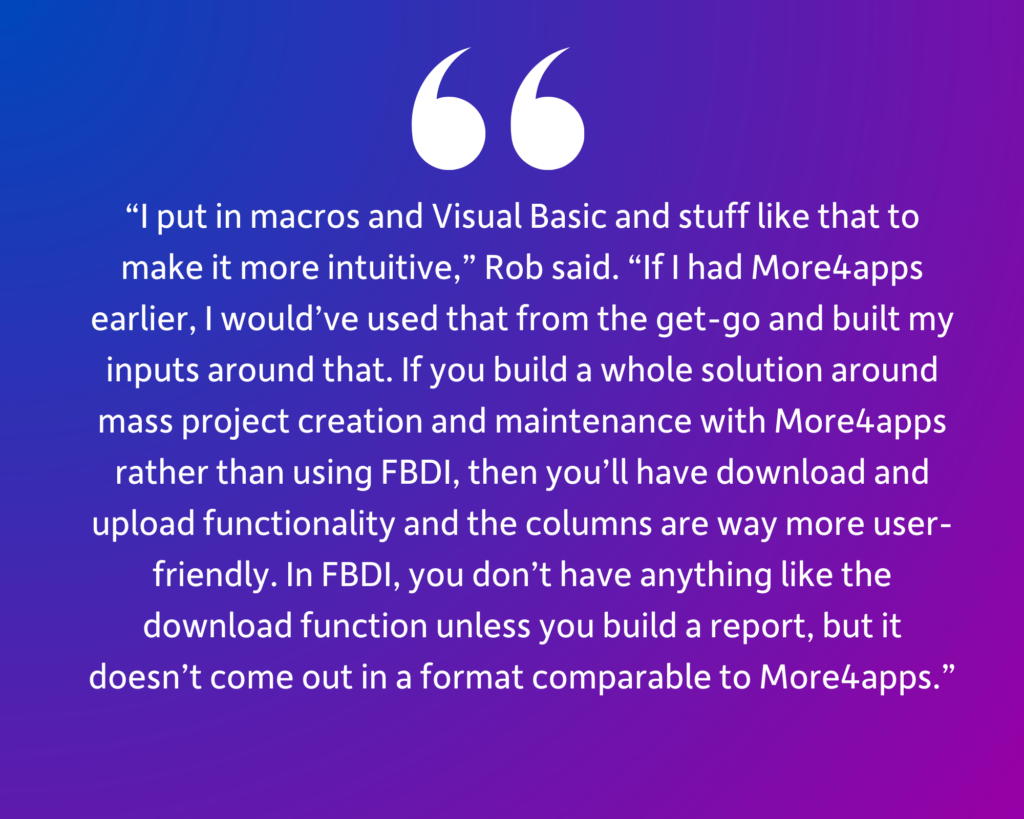
According to Rob, using the FBDI templates requires job aids and training. The error message can be difficult to interpret and understand for everyday users. If users begin needing to create more projects, the company may revisit the project creation process to incorporate More4apps rather than FBDI templates.
Project Creation Tool Comparison
Project Maintenance
With no standard Oracle tools available for managing a high volume of project metadata after it has been loaded, Rob felt strongly that automation was needed. Doing the task manually would be time-intensive, costly, error-prone, and important deadlines would be missed. His preferred solution was More4apps.
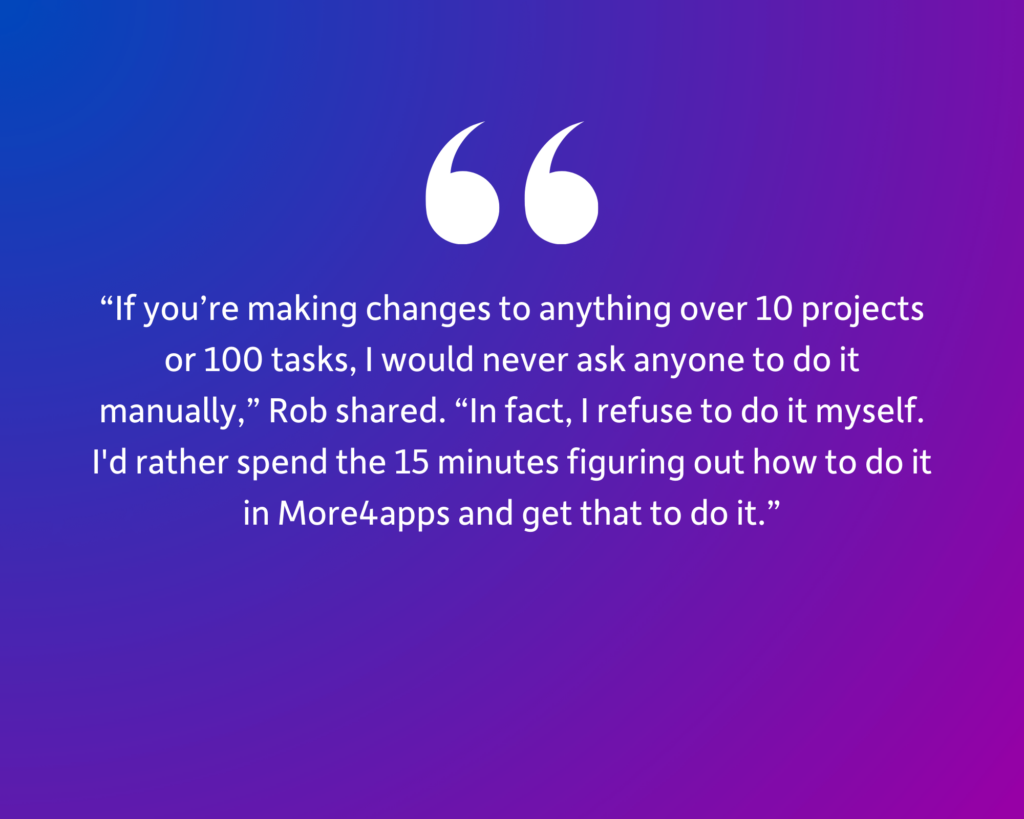
Creating a custom in-house update API was an option, but it wasn’t ideal. Building a custom tool requires considerable upfront investment in development and testing. It also requires specialized knowledge of PPM REST APIs. Later, significant training would be needed to help users learn the custom tool. Maintaining skilled in-house support for issues and errors also leads to ongoing expenses.
Rather than deal with this large investment and its ongoing expense and complexity, Rob recommended that the company utilize the More4apps Projects Module. The Excel front-end provides a familiar, intuitive interface where users can quickly and easily download, edit, and upload mass data to complete project updates. Data validation and easy-to-understand error messaging are included.
The ERP Cloud Toolbox Projects Module
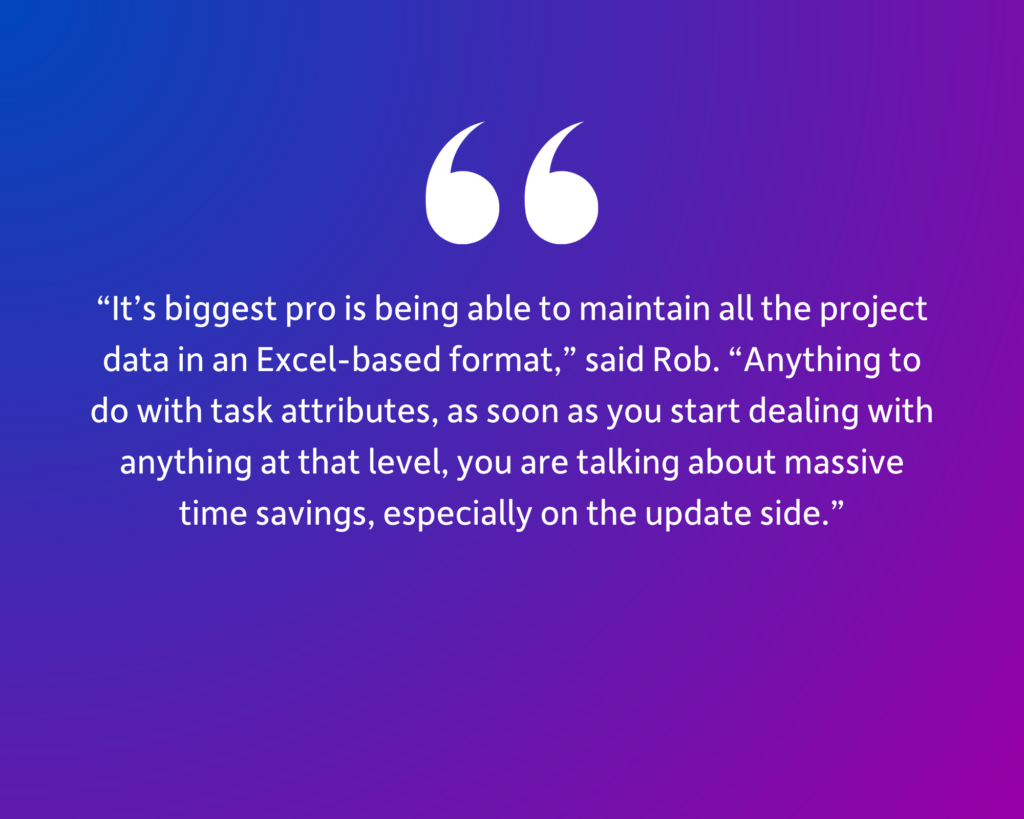
Project Maintenance Tool Comparison
| In-House Update API | More4apps | |
| Pros | • No ongoing subscription fees | • Efficient mass updates and ad hoc changes to single or multiple projects • In-sheet upload and download functionality • Single sheet for each data entity – no linking worksheets • Precise data validation, with errors returned to the worksheet • Clear error messaging • No initial large investment • Simple, user-friendly Excel front-end requires very little training • Quick to install and implement • Online support |
| Cons | • Considerable investment in development, testing, and user involvement • In-house support for issues and errors resulting in ongoing costs • Need knowledge of PPM REST APIs • Training needed for using custom tool | • Ongoing subscription costs • May require initial assessment from internal IT and legal teams |
The Value of Planning and Changing Management
The process of guiding our customer in moving to Oracle Fusion Cloud Applications has reiterated to Rob the importance of communication and planning. For example, the number of conversations required and the length of the approval process to bring in his preferred software for data loading took longer than anticipated.
This led to him moving forward with customizing Oracle’s FBDI templates and building a process around this functionality rather than using More4apps. Shortening timelines for bringing in external software, helps to anticipate and prepare for likely questions.
In addition, moving away from long-existing systems and workflows creates friction and discomfort among team. Explaining the changes and the benefits helps to reduce the hesitancy among employees. Although, training and communication lies ahead before everything runs smoothly.
Old habits are hard to break, and change takes time. Simplifying processes with tools like More4apps that are intuitive and easy to learn can help. Having a support model and a dedicated change management team is critical to the success of any move to Cloud.
Results
Approximately two years after beginning the migration process, the new ERP system, including Oracle Project Management, went live on Cloud. The company’s project management and financial systems have been successfully and completely integrated. Therefore, leading to better reporting, improved insights across the organization, and easier project management.
One major benefit of the move is the ability to maintain projects across more than 70 countries in Cloud. With automated processes and instant data validation that helps users find and fix errors, the company can be confident in the quality and reliability of their project management data and reporting.
Even with a lean team, the company can efficiently manage ongoing maintenance. They can also respond to urgent requests for same-day production updates. For example, Rob recently had to add a DFF value that was used in the accounting/SLA configuration. Using More4apps, he updated the value across 9,000 projects within an hour. If this task had been completed manually, it would have taken one person more than six days.
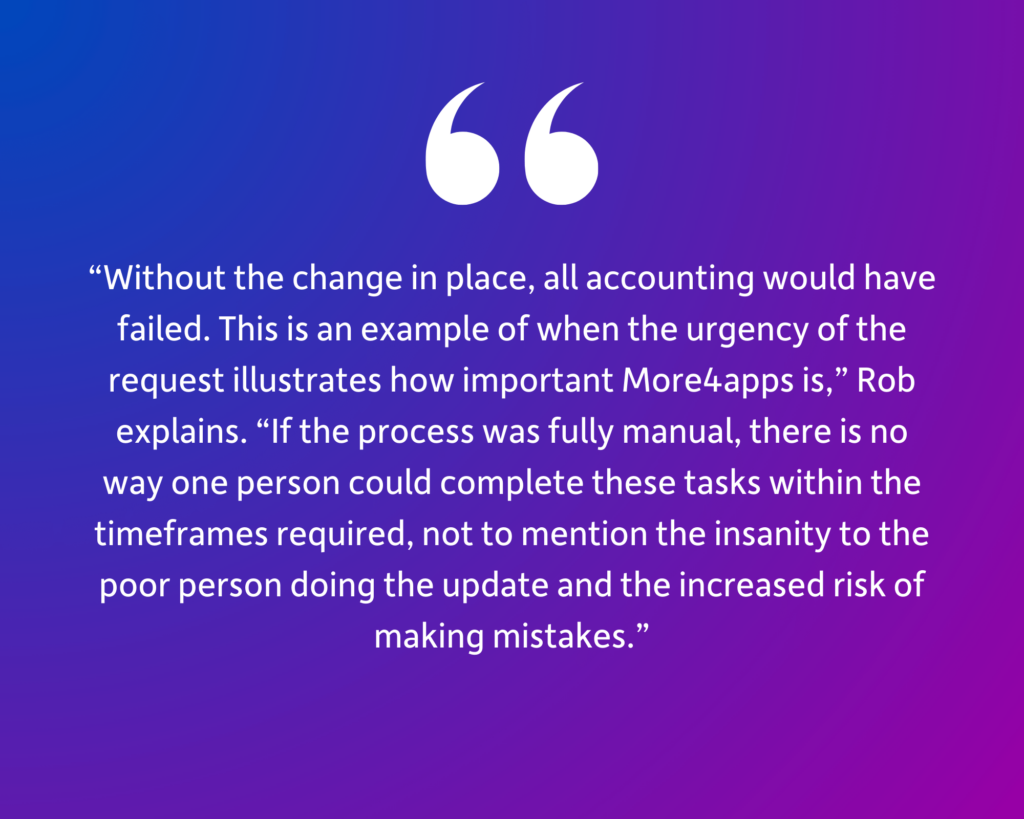
Nearly 25,000 updates have been made to projects and tasks between the go-live in July through mid-September. Those changes took less than seven hours; whereas, it would have been approximately 17 days of extremely tedious, error-prone work if completed manually.
Managing these updates and achieving deadlines would require a much larger team without a data loading software solution. Since the company implemented More4apps, team members spend less time on data entry and more time on high-value, rewarding work.
Rob also used the software to make changes during design and user acceptance testing before going live. “The time saved in testing cycles is virtually impossible to quantify,” says Rob. “Without More4apps, I am not sure we would have even been able to successfully test PPM.”
Rob will train more team members on how to use the More4apps tool. That way they can make updates without having to submit a support request. Being able to work independently and removing reliance on IT teams, further streamlines and accelerate the data loading processes.
Moving Forward with the Right Tools in Place for Success
With the combined power of Oracle Fusion Cloud Applications and More4apps, our customer has moved away from dispersed spreadsheets and disjointed systems. Now they have the processes and systems in place to maximize efficiency and optimize the project management, reporting, and financial processes across the organization – paving the way for ongoing future success.
Resources
Oracle Project Portfolio Management with a Move to Fusion Cloud Applications
The ERP Cloud Toolbox Projects Module
More4apps ERP Cloud Toolbox vs. Oracle Processes
Oracle FBDI and ADFdi vs. More4apps: Data Loading Alternatives for Fusion Cloud
Visit our website to learn more about our data loading tools for Oracle Fusion Cloud.
